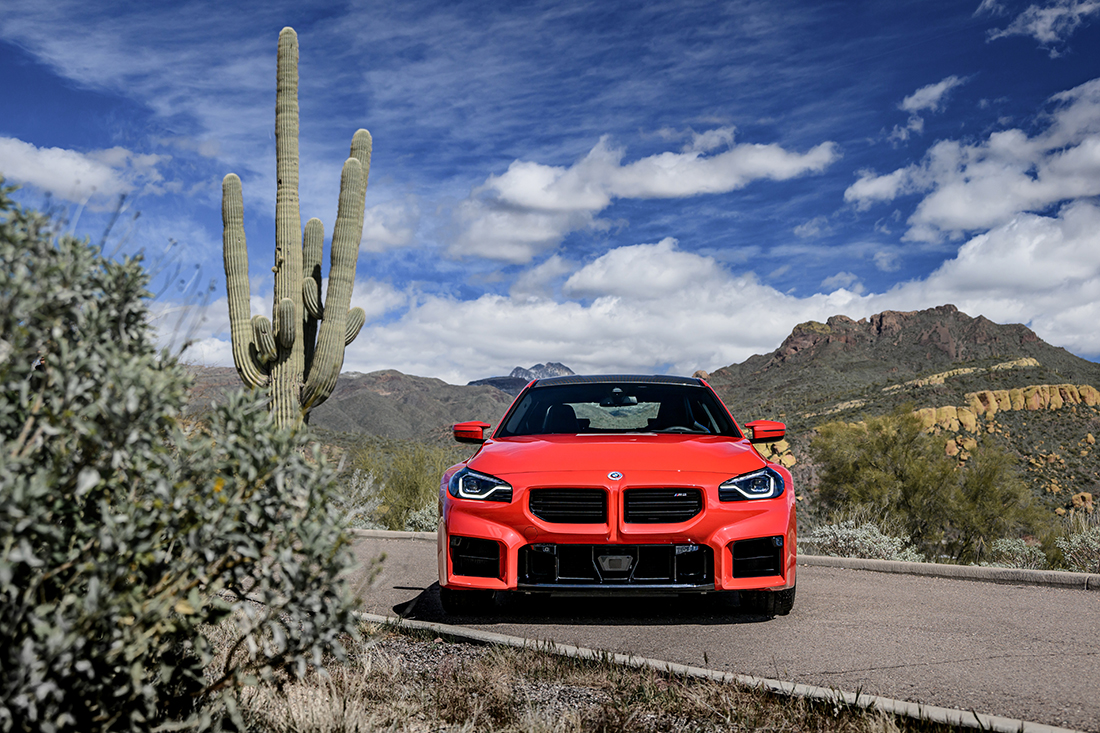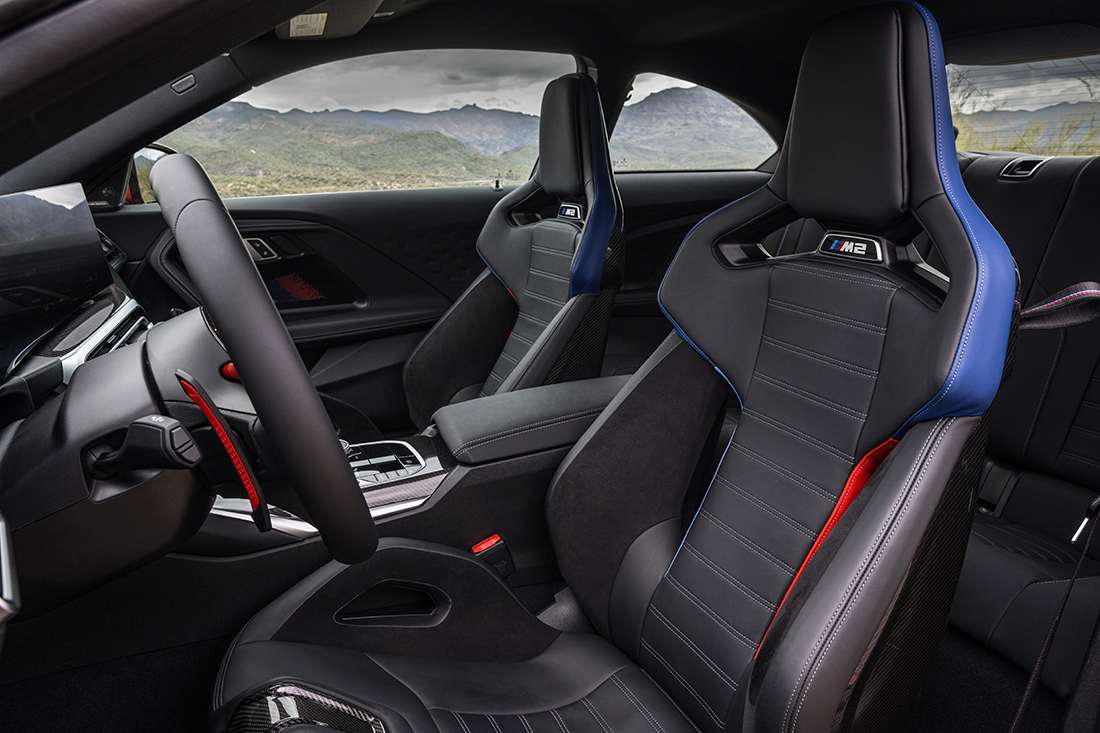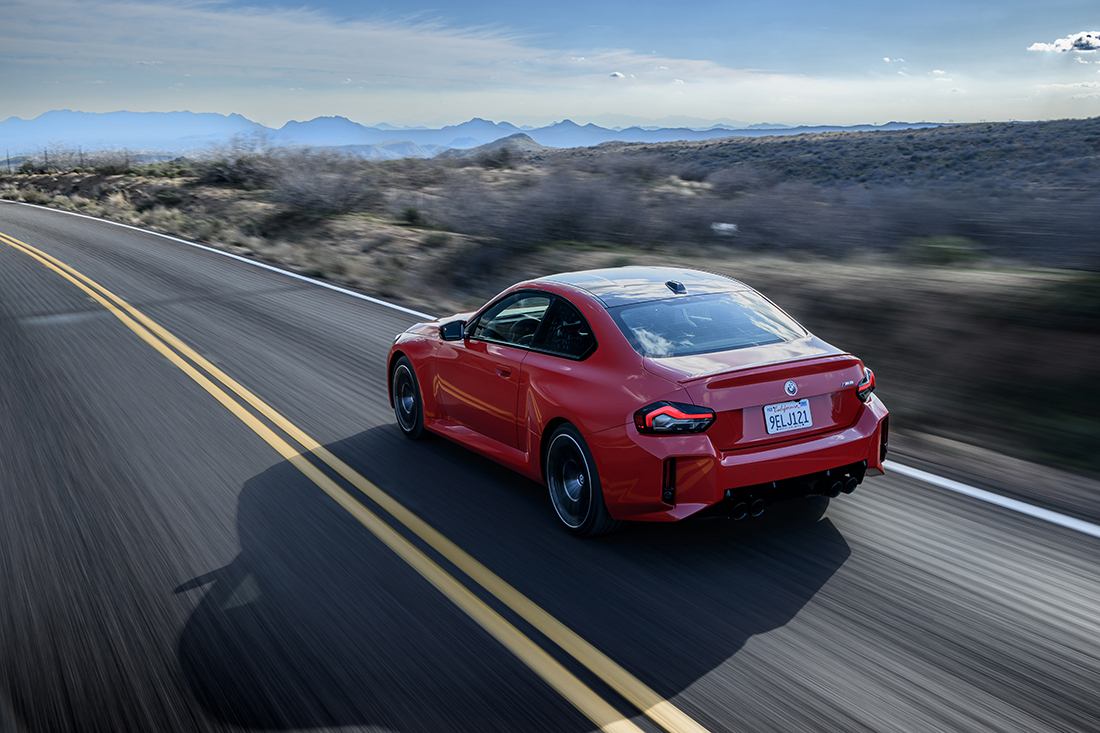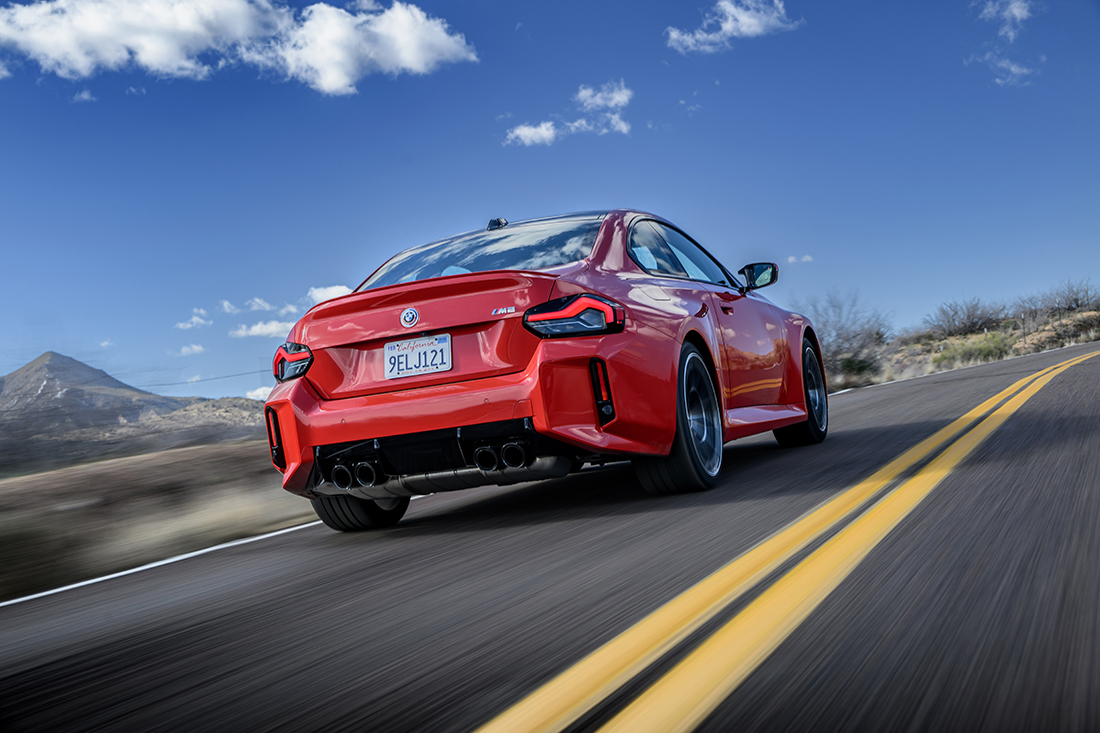2023 BMW M2 Review : Higher Love






2023 BMW M2 Review : Higher Love
Arizona, USA - Like the wise woman, there are two things ye should know about the new BMW M2.
Firstly, it is a modern M car - tech-filled, perhaps too powerful, and too fast for its own good. Secondly, it’s still very much the feel-good driver’s car that made the first-gen M2 a brand best-seller.
The M2 launched in 2016 and immediately became the not-so-obvious gem of the BMW M lineup, as a spiritual successor to the now cult-valued 1 Series M, as DK explains in his story at the first drive of the car in Laguna Seca, and excellent 1 Series M/M2 feature.







The backdrop here is M’s evolution into a more mainstream performance brand : turbocharging (yes, amazing), SUVs (less amazing), and MPA cars (nice). On the other end of the M spectrum, we now have the colossal plug-in hybrid performance SUV, the XM, which breaks almost entirely new ground and also treads on the toes of die-hard M purists.
As the fun, compact M the M2 is the balm for those sore little piggies (this is not a DK reference) though first glance at the car surely kicks up some porcine thoughts. BMW has opted not to put the megakidney grille from the 4er/M4, but gone for a smaller, frameless approach.
To be frank it looks weird. We’re not exactly sure what M was going for with this, and the squarish lower front end doesn’t seem to match the rest of the car, or the rest of the range. We also saw the car dressed up in optional M Performance parts, which is a violent sideways step, though their availability in Singapore is currently TBC.
If you can live with the look of the front - after driving it, we surely can - then the rest of the package is rather M-pressive. The rear view is much easier to swallow, and you’ll also notice that the car is 49mm wider than a regular 2 Coupe (16mm wider than the first-gen M2), or the same width as an M4. Uh huh, it means business.

Balancing that out is the fact that the car now weighs as much as a M4 Competition, or 1,725kg without a driver. That’s a 150kg increase over the previous gen, or a mere 1.5 David Khoos, or 8 Cliffords, by TGS metrics.
Still, spec-gazing will only get you so far, and the proof is in the Alcantara-and-carbon-studded pudding. And it’s quite a tasty one to get your teeth, or hands, into.
For one thing, the M2 now has adaptive suspension as standard (there’s no mention of fixed-rate options in the spec) along with a veritable litany of options. Actually it’s a little mind boggling, so it’s best to pre-set what you want before you head off and curse the touchscreen(ask us how we know!).







It’s at least very nice to look at, the Widescreen setup we first saw in the iX electric SUV and which is slowly proliferating throughout the BMW lineup. Ergonomically there is very little to complain about : visibility is good, far better than on some coupes, and here most coupe-SUVs should be abashed and slink off to a dark corner on kerbed wheels.
Like the other M cars, things go in the three ‘broad’ modes (Road, Sport, Track) and then the optional M1 and M2 ‘overrides’. You can tweak everything from braking behaviour to engine/throttle map, and gearshifts, all standard for a modern M car. There’s a lot to go on, but once you get it all sorted, you have a car that shifts from ‘slow’ to ‘go’ and everything in between, whenever you want.

It’s not just mental mode-ing either, as the M2 tackles the suburban grind and the superslab of the freeway with acceptable civility. With most of the changes, you can feel a difference, but especially in the suspension which goes from stiff, to stiffer, and stiffer-est. Hey, it’s a small, sport coupe after all and you aren’t gonna buy it to pack your Gödmorgon cabinets, or give your friends a lift (maybe your enemies) with.




Stiff is okay for Scottsdale, one of the suburbs of Phoenix, but out in the sticks, the canyons of Maricopa County for example, somewhere between stiffer and stiffer-est is perfect for the M2 to let loose.
That newly widened stance and short wheelbase work wonders in corners, as the M2 eats them up without pause and just enough of a hint of roll for feedback. Set the mode to ‘Go’ and its appetite widens almost without pause, but at the same time preserving that plugged-in feeling. The problem is not that you’ll have to reach mad speeds to start feeling the car working beneath you (true of almost all full M cars) but that it’s so darn fun you’ll want to stay there.
If anything, it’s too little pause for a supposedly purist car. The front-end isn’t as pointy as it was on the previous car, and this new version certainly has integrated much of the ‘Big M’ DNA onboard.
If the M2 is now the same weight as the M4, we honestly didn’t feel it because the former is now very fast, faster than its 0-100k/h time suggests. There’s more torque made in a wider band, so it’ll accelerate almost anywhere and any time. Yet with the electronics on, it remains engaging and fun to drive, you can even take small liberties with it, and nothing cuts in to spoil the fun too obviously.
Like the previous M2, the short wheelbase and lack of obvious aero (a plus in our book) means that the car will get frisky at higher speeds. On long, fast stretches of bumpy Arizonan tarmac, it will test your courage.
What would have helped contextualise the M2 further is track time, which we sadly did not get, but the same tweakable electronics as the M4 now include not only M Dynamic Mode (bit of slide-y) and DSC Off mode, with M Traction Control in 10 discrete steps (slide-y from 1 to 10), as well as the Drift Analyser.
In our mind, it should do quite well, though you will need a bit more bravado to pilot one at full chat as opposed to the larger, more composed M4. But the M2 also now packs M Traction Control, which allows you ten steps of control over the amount of slide you want, even with DSC Off.

But what about the manual version?
The handling and ride are the same, naturally, but having to think about which gear you’re in does of course add a significant element of driver involvement into the picture - especially when you get it right. The fatter torque band means the M2 isn’t finicky about gear selection, which is just as well since the manual gearbox is accurate enough, but not the slickest-shifting unit around. There is the consolation of the light, easy clutch and auto-blipping.

Purists and weight-weenies (often the same people) will be happy with the, uh, M2 Purist Edition, which is a local limited-ed spec that will have the manual gearbox (1,700kg, 25kg less than the auto), the carbon seats (-10.8kg) and carbon roof (-6kg). On paper, it’s the obvious choice for the keen, though in our road test there wasn’t a huge, perceivable difference in performance between the auto and manual. There is one more quibble here, and that is the fact that the very pretty carbon seats have a central, hard accent that fouls your under-thigh. It’s a minor irritation on the auto, and more vexing on the manual.

But what is the TG verdict? If it was up to us to buy a modern M car, the M2 is still the one we’d pick, either manual or auto is good. It’s still the easiest to drive daily, easier to park and manoeuvre, fast as feck, maybe a tad less feelsome but a whole lot more powerful and capable. It should be lighter, pointier, and more direct, at least if we reference the outgoing M2 Competition - but we’re sure that’s all in the Coming Soon (CS) pipeline.
PHOTOS BMW
BMW M2 (8-speed auto)
Engine 2998cc, inline 6, twin-turbo
Power/rpm 460hp/6250rpm
Torque/rpm 550Nm/2650-5870rpm
Transmission 8-speed auto
0-100km/h 4.1secs
Top Speed 250km/h - 285km/h optional
LxBxH 4580 x 1887 x 1403mm
Wheelbase 2747mm
Kerbweight 1725kg
Fuel Consumption 9.7l/100km
CO2 220g/km
VES TBC
Price S$380,000 without COE,
VES TBC
BMW M2 (Manual)
Engine 2998cc, inline 6, twin-turbo
Power/rpm 460hp/6250rpm
Torque/rpm 550Nm/2650-5870rpm
Transmission 6-speed manual
0-100km/h 4.3secs
Top Speed 250km/h - 285km/h optional
LxBxH 4580 x 1887 x 1403mm
Wheelbase 2747mm
Kerbweight 1700kg
Fuel Consumption 10.1l/100km
CO2 226g/km
VES TBC










